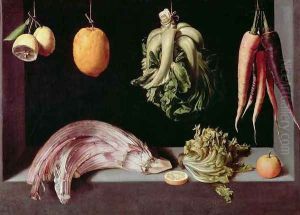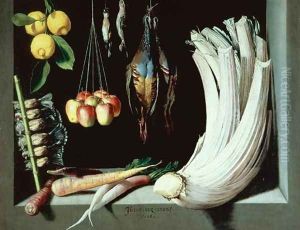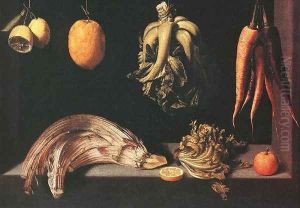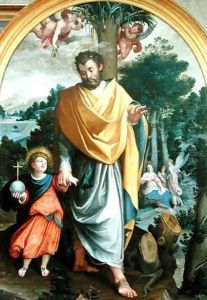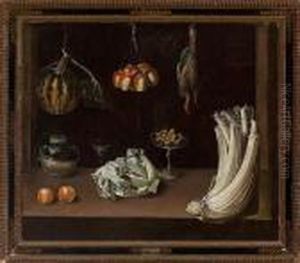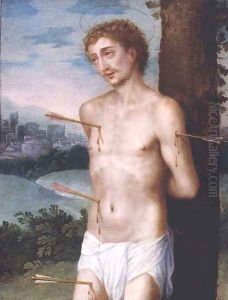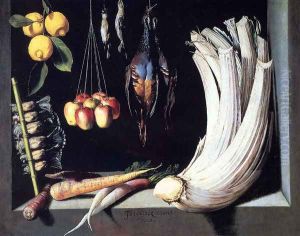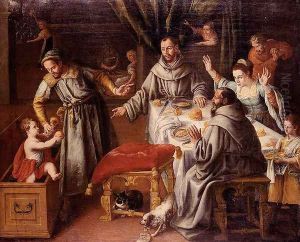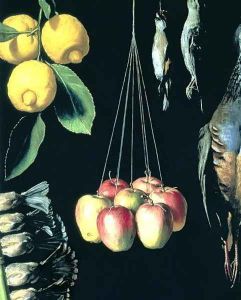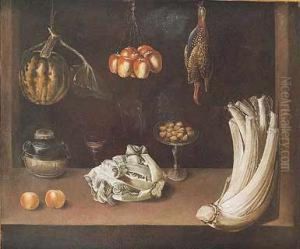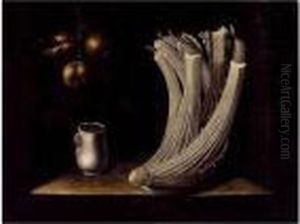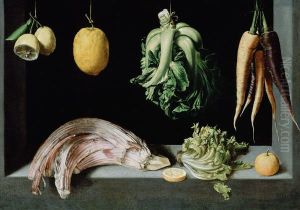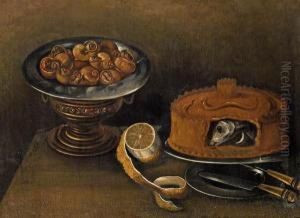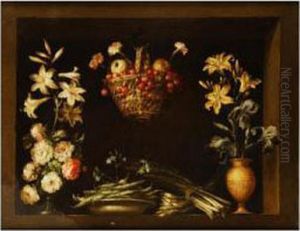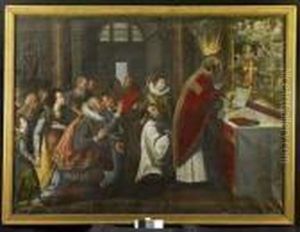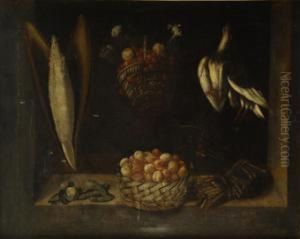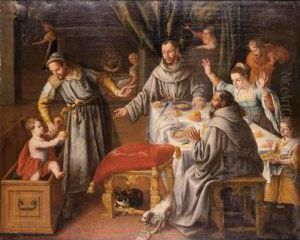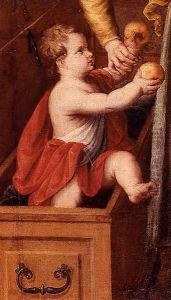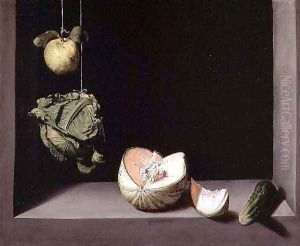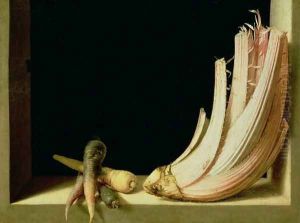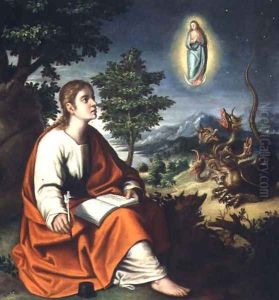Juan Sanchez Cotan Paintings
Juan Sánchez Cotán was a Spanish painter, best known for his still life paintings that are considered some of the earliest examples of the genre in Western art history. Cotán was born in Orgaz, near Toledo, Spain in 1560. He began his artistic career in Toledo, where he worked on religious commissions and gained a reputation for his meticulous attention to detail and his ability to create a sense of serenity in his works.
In 1603, Cotán moved to Granada and entered the Carthusian monastery of Santa María de El Paular. His decision to become a monk greatly influenced his artistic style and subject matter. In the seclusion of the monastery, Cotán's work became more introspective and focused on still life, or 'bodegones' as they were known in Spain. These works often featured a simple arrangement of objects, such as fruits and vegetables, set against a dark background with a masterful play of light and shadow, which highlighted the forms and textures of his subjects.
Cotán's still lifes are characterized by their realism and the spiritual quality he imparted to ordinary objects. His compositions are notable for their geometric organization and the sense of tranquility they evoke. One of his most famous paintings is 'Still Life with Quince, Cabbage, Melon, and Cucumber', which exemplifies his style and skill. The painting showcases his use of a window ledge motif with objects carefully placed in a way that they seem to extend out of the canvas towards the viewer, a technique that adds a three-dimensional effect to the work.
Although Cotán's artistic career was relatively short due to his monastic life, his influence on the development of still life painting in Spain was significant. His works predate those of other famous still life painters, such as Francisco de Zurbarán and Juan van der Hamen, and they are regarded as precursors to the bodegones of the Spanish Golden Age. Cotán's paintings are held in high esteem for their purity of form and the meditative quality that reflects his monastic lifestyle.
Juan Sánchez Cotán passed away in 1627 in Granada. His legacy lives on through his unique contributions to the still life genre, setting a standard for simplicity, realism, and the portrayal of inanimate objects with a sense of the divine.
